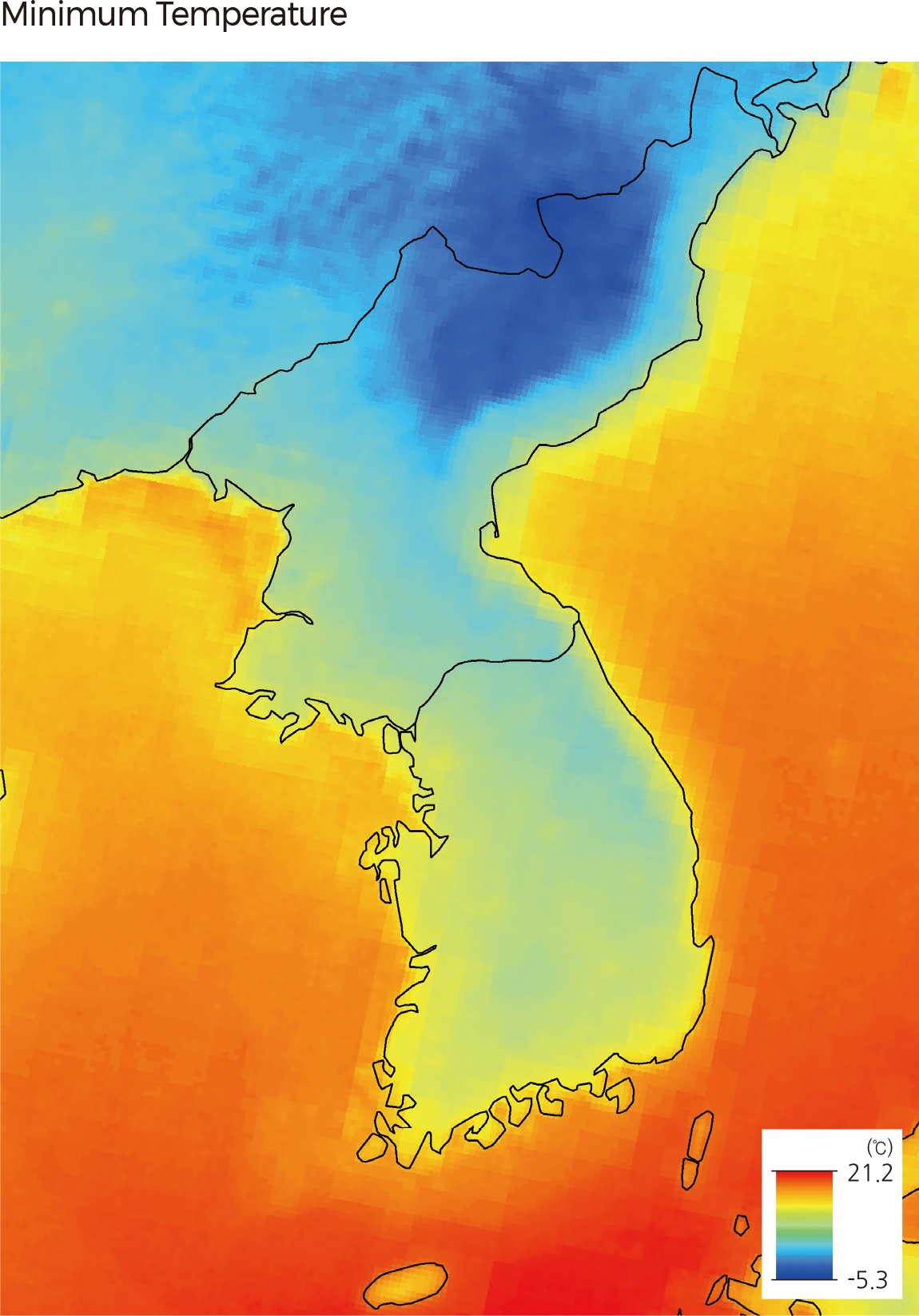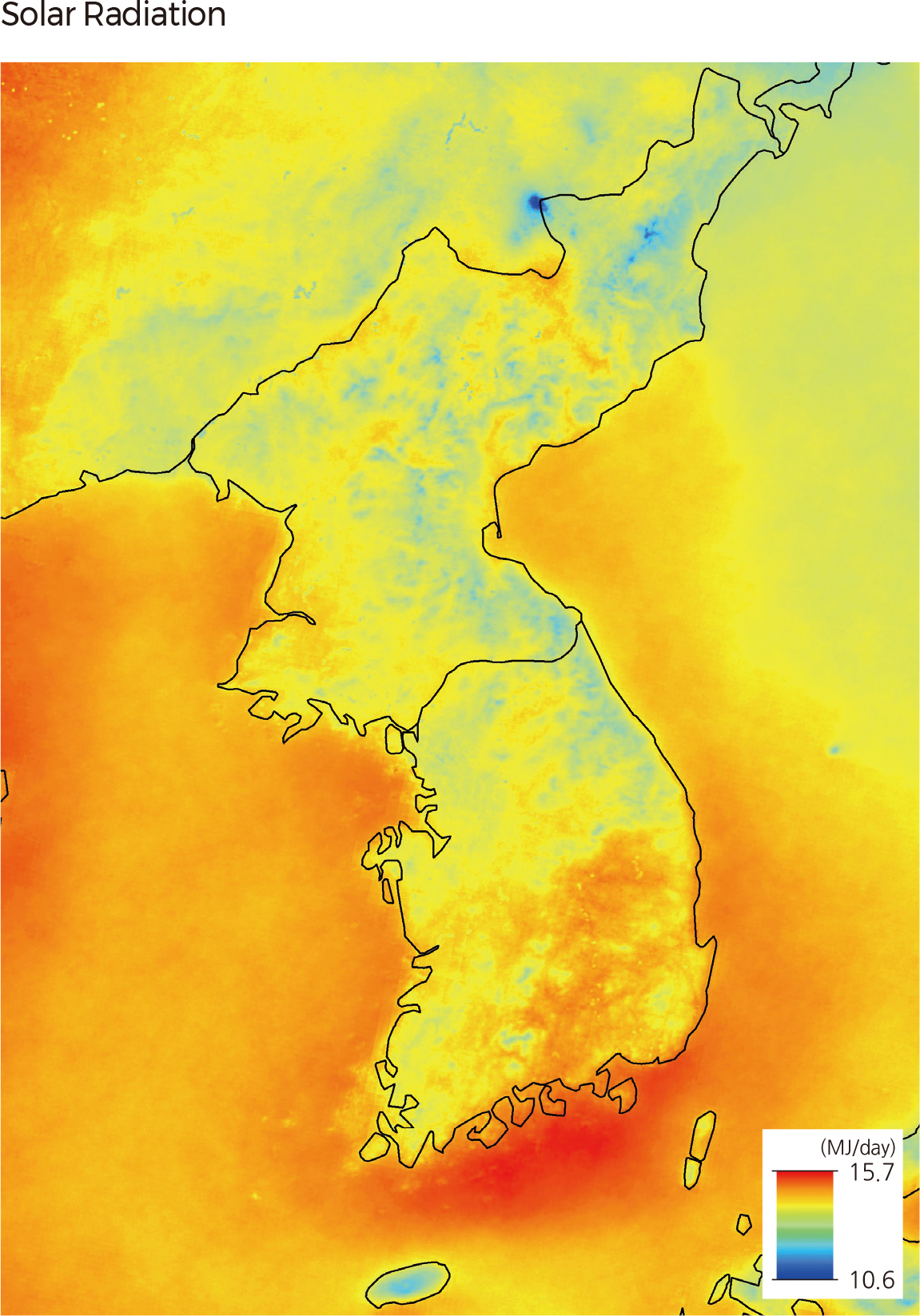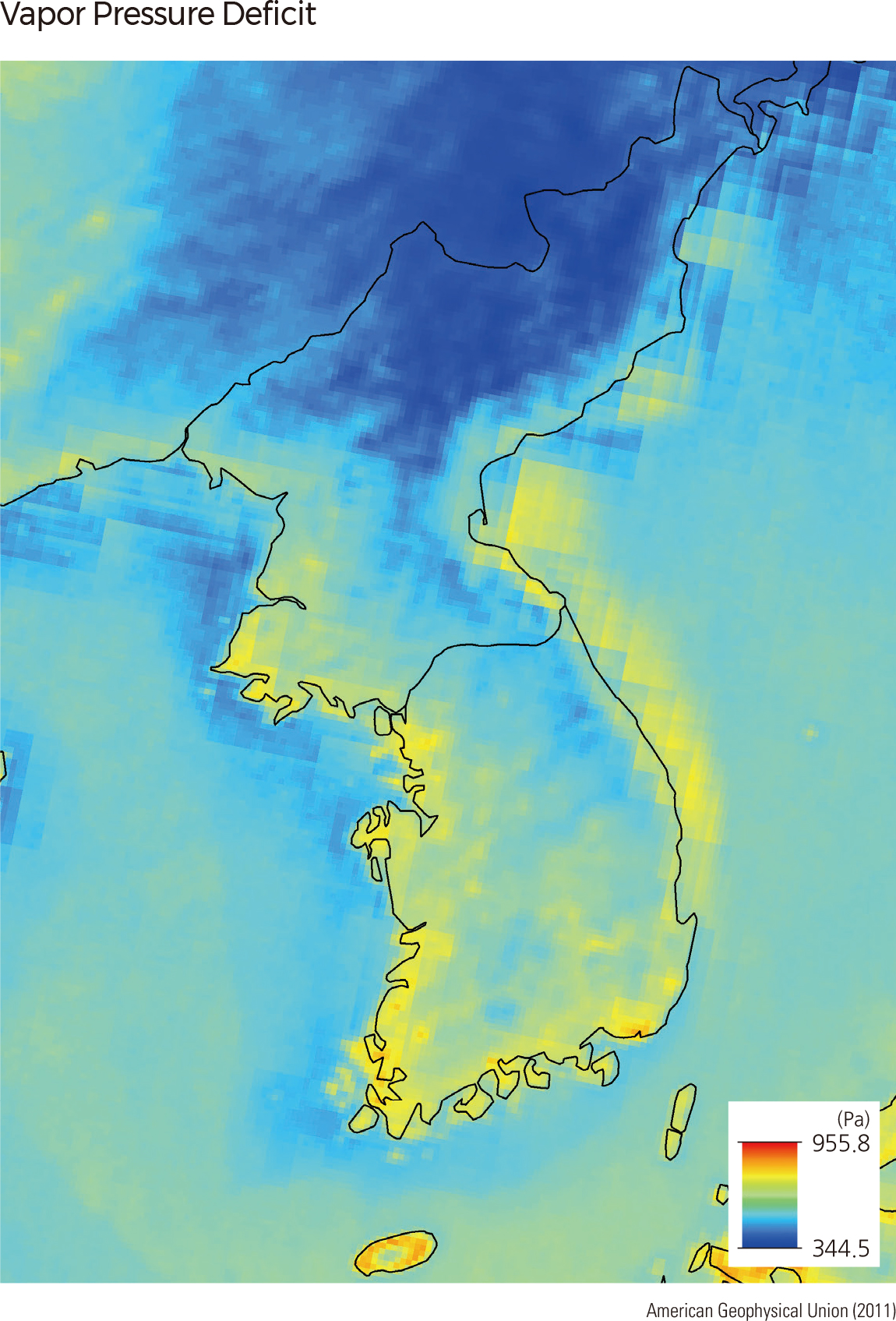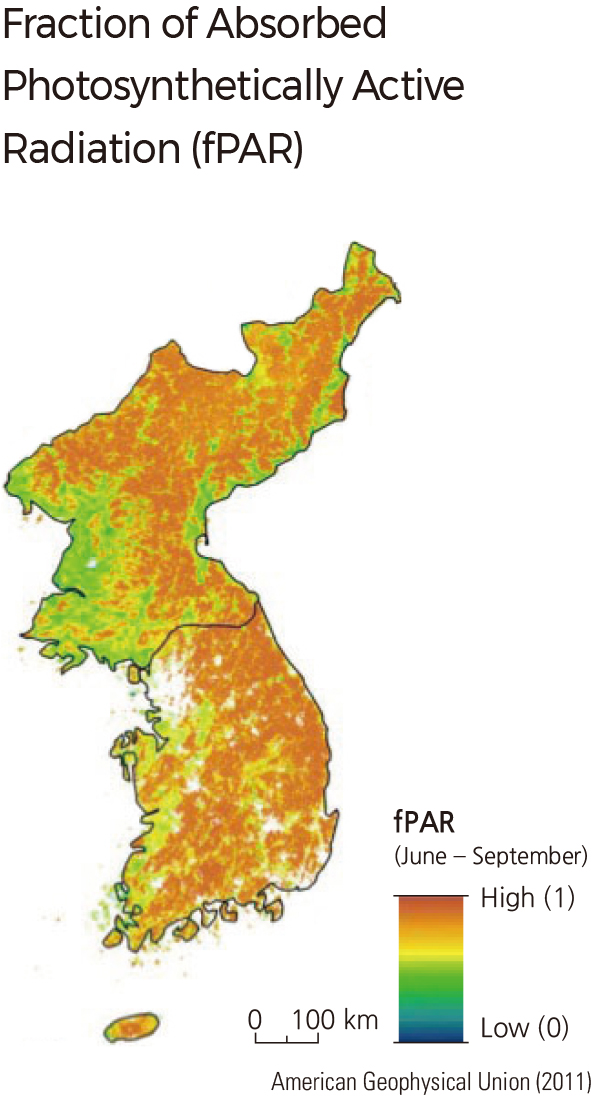English II 2020
Climate and biota influence photosynthesis and evapotrans-piration, resulting in distinctive spatial differences in ecological functions. The fraction of photosynthetically active radiation (fPAR) is the ratio of PAR absorbed by plants to the total incident PAR in the atmosphere. The number of fPAR approaches 1 as the number of leaves increases. Stomata closure is mainly controlled by minimum temperature and vapor pressure deficit. Incident solar radiation is the main driver of photosynthesis and evapotranspiration. Daily minimum temperature and solar radiation vary with the length of the growing season, while mean daily temperature controls plant respiration. These climatic variables show different seasonal and spatial patterns with latitude, altitude, topography, and land cover types, which mainly determine soil-vegetation-atmosphere carbon and water cycles. Consequently, these environmental variables are the main factors that cause the differences in the processes of the water cycle and the carbon cycle in soil, vegetation, and atmosphere. Korea has a significantly high degree of ecological diversity, considering the size of its land. Likewise, ecosystems display consi-derable spatial variation due to the different levels of photosynthesis and evapotranspiration in plants according to the climate and biota of the area.
G r o s s P r i m a r y P r o - ductivity (GPP) and eva-potranspiration in Korea show intermediate values compared to those of Japan and China at similar latitudes. Japan, which experiences high temperatures and the high humidity of a marine climate, shows higher values, whereas China, which experiences a continental climate, exhibits lower values. Western China, located far from the sea, shows lower GPP and evapotranspiration than other regions at equal latitudes. Korea shows an increased GPP and evapotranspiration at lower latitudes and at regions closer to the Pacific Ocean. This is caused by climatic characteristics of the southern and eastern coasts and by comparatively high temperatures and humidity, which cause the wide distribution of broadleaf evergreens and conifers.
Evapotranspiration includes evaporation from water bodies such as seas, lakes, and rivers and transpiration through the stomata in leaves. Evapotranspiration returns around half of the precipitation received on land to the atmosphere; thus, it is an important ecological component that regulates regional and global climates. Plants lose water vapor through stomata openings but gain atmospheric carbon dioxide, which is essential for photosynthesis. Thus, evapotranspiration and photosynthesis are physiologically coupled and show a positive correlation. Therefore, the annual evapotranspiration map of Northeastern Asia shows a spatial pattern similar to that of the region's GPP; evapotranspiration increases with latitude and decreases with urbanization.
Net Primary Productivity (NPP) is the difference between Gross Primary Productivity (GPP) and autotrophic respiration of a primary producer, mostly plants. NPP determines photosynthetic products that are available to humans, animals, and microbes. The annual means of NPP and GPP from 2000 to 2009 reveal that the values vary with latitude, distance from the sea, and land cover. This is because factors such as local climate, length of the growing season, and biomass affect the rate of photosynthesis in plants, and the consumption rate of animals and microorganisms. Thus, NPP and GPP values are higher in lower latitudes than in higher latitudes, decrease with distance from the sea, and are very low in dry regions such as western China and the Mongolian plateaus. |





